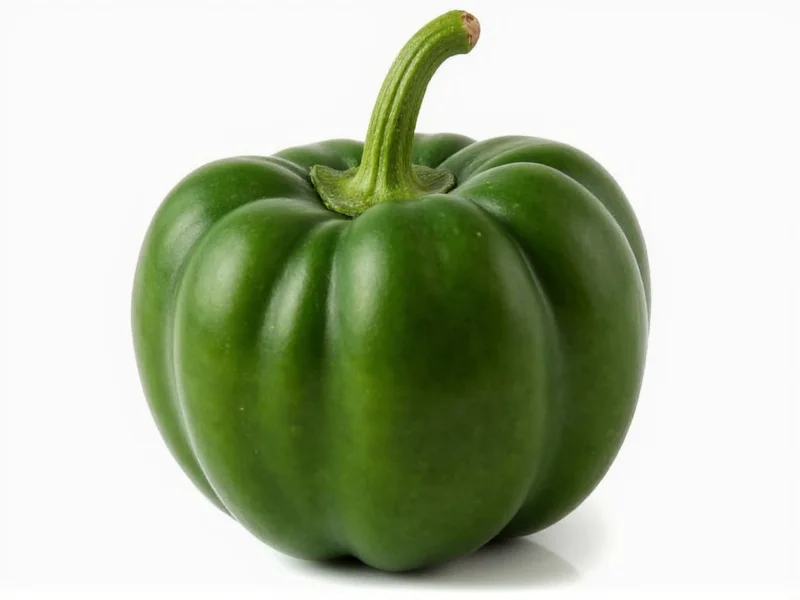No, poblano and pasilla peppers are not the same. Poblano peppers are fresh, mild-to-medium heat chilies (1,000-2,000 SHU) commonly used in Mexican dishes like chiles rellenos. Pasilla peppers are actually the dried form of chilaca peppers, not poblanos, with a distinct raisin-like flavor and medium heat (1,000-2,500 SHU). The confusion often arises because dried poblanos are sometimes mistakenly labeled as 'ancho' peppers, while true pasillas come from a different pepper variety altogether.
Understanding the difference between poblano and pasilla peppers is essential for authentic Mexican cooking. Many home cooks and even some grocery stores mistakenly use these terms interchangeably, leading to disappointing results when recipes call for one but the other is substituted. This comprehensive guide clarifies the botanical origins, flavor profiles, heat levels, and proper culinary applications of both peppers to help you make informed choices in your kitchen.
Botanical Origins and Naming Confusion
The poblano ( Capsicum annuum) is a large, heart-shaped fresh pepper that starts dark green and matures to red. When dried, it becomes the ancho pepper—not the pasilla. The pasilla, meanwhile, is the dried form of the chilaca pepper, a long, narrow variety that turns from dark green to brown as it matures. The term "pasilla" literally means "little raisin" in Spanish, referring to both its appearance and flavor when dried.
This widespread confusion between poblano and pasilla peppers stems from inconsistent labeling practices, particularly in the United States. Some retailers incorrectly label dried poblanos as "pasilla" peppers, while others use "pasilla" to refer to any dried chili. Understanding the true botanical identities prevents recipe failures and ensures authentic flavor profiles in your cooking.
Physical Characteristics Comparison
Recognizing these peppers by sight is the first step to using them correctly. The following table highlights key visual differences between fresh poblanos, dried poblanos (anchos), and true pasilla peppers:
| Pepper Type | Shape & Size | Color | Surface Texture |
|---|---|---|---|
| Fresh Poblano | Large, heart-shaped (3-6" long) | Dark green (turns red when mature) | Smooth, thick flesh |
| Dried Poblano (Ancho) | Flat, wide, heart-shaped | Deep reddish-brown | Leathery, slightly wrinkled |
| Pasilla (dried chilaca) | Long, narrow, curved (6-8" long) | Dark brown to black | Deeply wrinkled, raisin-like |
Flavor Profiles and Heat Levels
When exploring the difference between poblano and pasilla peppers, their flavor profiles reveal significant distinctions that affect recipe outcomes. Poblano peppers offer a mild, earthy flavor with subtle notes of bell pepper when fresh. Their heat registers between 1,000-2,000 Scoville Heat Units (SHU), making them accessible even to those with low spice tolerance.
Pasilla peppers, by contrast, deliver a more complex flavor profile with pronounced notes of dried fruit, licorice, and cocoa. Their heat level ranges from 1,000-2,500 SHU—slightly hotter than poblanos on average. The drying process concentrates flavors and slightly increases heat, giving pasillas their characteristic depth that's essential in traditional Mexican mole sauces.
Culinary Applications and Substitutions
Knowing whether poblano is the same as pasilla matters significantly for recipe success. Fresh poblanos excel in dishes where their thick walls can hold fillings, such as chiles rellenos, or when roasted and added to salsas. Their mild heat allows them to complement rather than dominate other ingredients.
Pasilla peppers shine in complex sauces and stews where their deep, fruity notes can develop. They're a key ingredient in many mole recipes and traditional adobo sauces. When a recipe calls specifically for pasilla, substituting fresh poblano won't achieve the same results—but dried ancho peppers (which are correctly dried poblanos) can sometimes work as a substitute in a pinch.
For those wondering can I substitute pasilla for poblano, the answer depends on the dish. In fresh applications, pasilla (which is always dried) won't work as a direct substitute. However, if a recipe calls for dried pasilla and you only have dried poblanos (anchos), you can substitute at a 1:1 ratio, though the flavor profile will be slightly different—anchos are fruitier while pasillas are more earthy with berry notes.
Shopping Tips and Common Mislabeling
Navigating grocery stores and markets requires vigilance to ensure you're getting the correct pepper. When shopping for poblano vs pasilla characteristics, remember these key identifiers:
- True pasilla peppers are always sold dried—they're never available fresh under that name
- Fresh peppers labeled "poblano" should be large, heart-shaped, and dark green
- Dried peppers labeled "ancho" are correctly identified dried poblanos
- If a store labels dried poblanos as "pasilla," consider finding a more reliable source
Mexican markets typically maintain more accurate labeling than mainstream grocery stores. When in doubt, ask the vendor for clarification about whether the dried pepper comes from a chilaca (true pasilla) or poblano (which should be labeled ancho when dried).
Storage and Preparation Techniques
Proper storage preserves the quality of both peppers. Fresh poblanos keep for 2-3 weeks in the refrigerator's crisper drawer. For longer storage, roast and freeze them in airtight containers. Dried peppers like pasillas maintain quality for 6-12 months when stored in airtight containers away from light and moisture.
Before using dried pasilla peppers, remove stems and seeds, then toast them lightly in a dry skillet to enhance flavor before rehydrating in hot water. Fresh poblanos often benefit from roasting to loosen their skins, which can be fibrous. Understanding these preparation differences between poblano and pasilla heat level considerations ensures optimal flavor extraction in your dishes.
Regional Variations and Naming Conventions
The confusion around is poblano the same as pasilla extends beyond grocery stores into regional naming differences. In Mexico, the distinctions remain clear: chilaca becomes pasilla when dried, while poblano becomes ancho. However, in the United States, inconsistent labeling has blurred these lines.
Some regions refer to any long, dark dried pepper as "pasilla," regardless of its origin. This mislabeling creates challenges for cooks seeking authentic flavors. When following traditional Mexican recipes, understanding the true identities of these peppers prevents disappointment and honors the culinary tradition.











 浙公网安备
33010002000092号
浙公网安备
33010002000092号 浙B2-20120091-4
浙B2-20120091-4